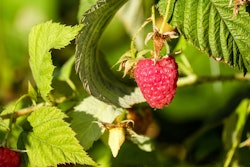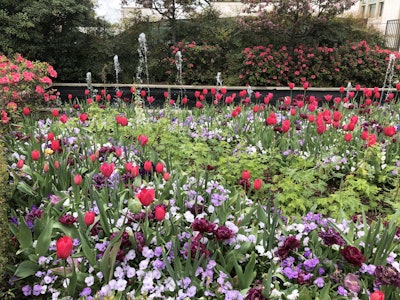 Photo: Jill Odom/Total Landscape Care
Photo: Jill Odom/Total Landscape CareIt’s natural for customers, both residential and commercial, to want their landscapes to look fabulous all year round, but they may not know how to achieve this appearance on their own.
This is where your landscaping company can step in and offer popular seasonal color services. Color programs have many benefits and you need to be able to communicate those to customers who may be taken aback once you quote them a price.
Benefits of seasonal color services
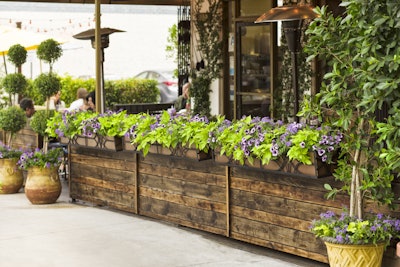 Photo: Courtesy of Proven Winners – www.provenwinners.com
Photo: Courtesy of Proven Winners – www.provenwinners.comThe main benefit of seasonal color landscaping services is the ability to boost your client’s curb appeal. Residential clients may want this feature to help sell their house, or they may take pride in how their property looks compared to neighbors. Commercial customers want to create an attractive business that draws in the customers of their own and even having garden beds and containers filled with beautiful flowers can make a difference.
Aside from catching the eye of those passing by, it also creates a beautiful space that customers themselves can enjoy year-round rather than looking at the sad leftovers of a plant whose bloom time has passed. As an added bonus, remind your clients that you will be the one handling the maintenance, so they can simply enjoy the plants without the hassle of trying to keep them thriving.
One of your biggest selling points will be letting your previous work speak for itself. Sharing photos of before and afters can show them just how powerful color can be in the landscape.
On the business side of things, offering a color program can be a beneficial service to offer, as customers can become repeat clients as they fall in love with the work you do to their landscapes each season.
What to charge
When it comes to the pricing of your seasonal color services, keep in mind your costs and what you plan to include in the package, versus optional add-ons like more site visits per month.
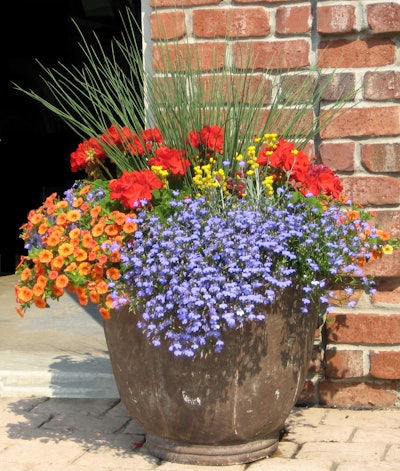 Photo: Courtesy of Proven Winners – www.provenwinners.com
Photo: Courtesy of Proven Winners – www.provenwinners.comFor Suburban Landscaping, based in Chicago Heights, Illinois, they say the price can vary depending on the size of the planting beds and the number of annuals selected. Large beds can run anywhere from $500 to $700 per planting rotation, but the exact cost can only be determined after the designers can evaluate the site for a landscaping quote.
Meanwhile, Color Burst, based in Grayson, Georgia, has a set seasonal minimum of $1,000, which includes the design, flowers and materials and maintenance throughout the year.
Due to the square footage of the planting beds varying greatly, some landscaping companies prefer to charge based on the amount of material needed and man hours to get the job done.
As for when to bill, one of the options is to take the set budget and divide it by 12 so clients receive a bill each month and you can have some consistent cash flow. Another option is to simply bill after changing out the plantings for that season.
Installation process
Once you have sold a customer on your seasonal color services, it’s important to meet with them to determine their needs and color preferences, as well as discussing their expectations.
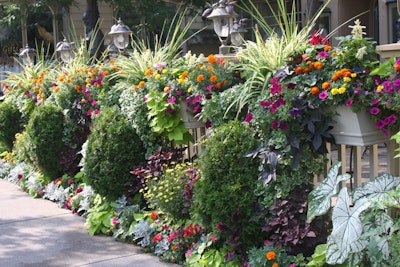 Photo: Courtesy of Proven Winners – www.provenwinners.com
Photo: Courtesy of Proven Winners – www.provenwinners.comA crucial element to doing a successful seasonal flower bed is to prep the beds properly so the annuals can flourish. They tend to do best in loose, well-draining soil, so take care to till and amend the soil as necessary. A slow release fertilizer should be added as well.
Depending on the type of plants used spacing will vary, but it is advised to use tight spacing between plants to create color density and an immediate effect.
As for maintenance, you can decide which will be offered at an additional charge, or if they’ll all be included as part of the program, but hand watering, weeding, deadheading, checking nutrient levels and applying pesticides are all tasks that will keep customers’ beds looking pristine.
When it comes to switching out a set of plants for the next season, this could be a scheduled date selected by the client or it can be when the plants start to decline. The main thing is to make sure the replacement plant material has good color when you decide to swap them out for the season.
Seasonal planting options
Although most seasonal color programs focus on using annuals as their bread and butter, consider offering perennials to those who may not be able to afford changes every season.
“While perennials are longer lasting, annuals are longer blooming,” says HighGrove Partners, based in Austell, Georgia. “And despite lasting for only one season, they are also relatively inexpensive to buy and plant.”
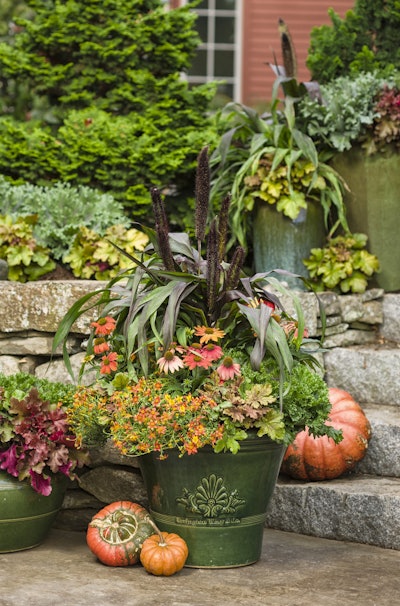 Photo: Courtesy of Proven Winners – www.provenwinners.com
Photo: Courtesy of Proven Winners – www.provenwinners.comColor programs also don’t mean you just pick whatever is the brightest plant available and go with that. What you choose to use also depends on if you are working on a commercial or residential property.
Commercial sites do better with simple, primary colors, as they have to make an impression much faster. Residential landscapes can have more colors included, but you should still limit yourself to a specific color range so the space still feels cohesive.
Each season has its own look and feel. The beds should be filled with plants that relish in that particular season.
Spring beds tend to do better with more rainfall and colder temperatures. Annuals that might be included for this season are pansies, snapdragons, violas, alyssum, tulips and daffodils. Summer planting beds can tolerate the higher temperatures and drier days and boast bright, bold colors. Some of these summer stars include zinnias, petunias, marigolds, impatiens and cosmos.
When it comes to fall plant material, you are not only planting for that current season but the coming spring with bulbs. Fall plants do well in the colder temperatures while offering warm colors, such as mums, pansies, kale, cabbage and ornamental grasses.
“In spring, we start off with various shades of green — from bright, crisp, celery to medium, sunny, grass to deep, rich, lush evergreen,” HighGrove Partners says. “As the season progresses into summer, it begins with wonderful whites and blushing pinks to the most vibrant shades of eye-popping purple, outrageous orange and radiant red. Then autumn blends these shades into warm, earthy tones.”
Offering winter plantings will depend on your location if it is worth the trouble, but it is still an option. You can spruce up containers with evergreens, berries and decorative branches.
Obviously, your planting palette will vary based on the area you’re working in, but this shouldn’t stop you from designing creative, colorful plans for your customer’s property.




